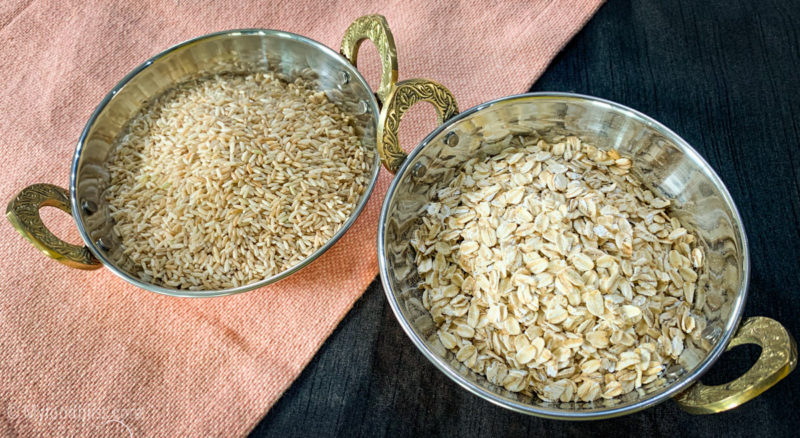Grains and Us

Human civilization is millions of years old. The first human foods were seafood, tubers, wild fruits/vegetables, and meat/marrow of land mammals. Interestingly, our history of grains, particularly domestication of grains, does not go back more than 11,000 years (www.foodtimeline.org) when the hunter-gatherer human became a farmer. The oldest grains were precursors of wheat, and then came rice.
It makes me wonder, why did our ancestors invent these grains far into human existence, when there is no plausible problem with the ancestral paleo diet? With farming grains came domesticated livestock. Grains gave our ancestors food security, although the human diet has become less nutritionally diverse since then. As the consumption of grains increased, the human body has been adapting to it, be it the type of teeth we have, or the gut biome, or the ability to process starches and certain substances like gluten.
To be defined as a whole grain, the grain should contain a germ (embryo), endosperm, and bran under the thick hull. Various grains we know today across the world are rice, wheat, corn, barley, rye, oats, millets. Buckwheat, quinoa, amaranth are ‘grain like’, or pseudo cereals, and are actually seeds that lack the three layered structure of whole grains.
The bran of the grain is rich in fiber (both soluble and insoluble) in addition to vitamin B, phytochemicals, and many other minerals. Phytochemicals are known to be protective against multiple diseases. The endosperm contains carbohydrates, small amounts of protein, vitamins, and minerals. The germ is rich in healthy fats, vitamin E, phytochemicals, and antioxidants.
Wheat and rice together today meet 50% of world’s food needs. And through the ages, green revolution, the production of whole grains, only keeps growing. Refining grains strips away the bran and germ, leaving the soft endosperm which is rich in carbs, but poor in fiber and other nutrients. Refined grains are easier to find, and cheaper but overall do not offer the same benefit as whole grains.
The detailed nutrition content of grains and grain like seeds can be found in a excel document in the website below. If you are interested, this will help you find the grains that best suit your needs.
Whole grains have been shown to decrease incidence of chronic diseases such as obesity, diabetes, heart disease, and cancer. Multiple scientific studies showed favorable effect of whole grains on fasting blood glucose, insulin levels, or blood cholesterol. For barley and oats, the direct protective effect was also seen on blood pressure, in addition to the above markers.
The key point, is that the quality, quantity, and the way whole grains are cooked determine their nutrition content and availability.
For example, oats, barley, and rye contain 1/3rd soluble fiber and 2/3rd insoluble fiber. Soluble fiber reduces cholesterol and improves glucose profile, while insoluble fiber works as a laxative. Refining these grains destroys the total fiber content.
As per American dietary guidelines-It is recommended to have at least 3 servings (each serving is 16 g dry weight) of whole grains per day, to have the evidence based favorable health effects.
Try to choose brown rice, whole wheat, and other unrefined commercial offerings of whole grains. For gluten free options, go for rice, oats, corn, millet, teff, buckwheat, amaranth, and quinoa. Pay attention to the packaging and figure out if the contents are 100% wholegrain. Soaking, sprouting, and fermenting all supposedly make the grains easily digestible.
Expand your Food IQ with a variety of whole grains that will fit your life and then reap the benefits.
